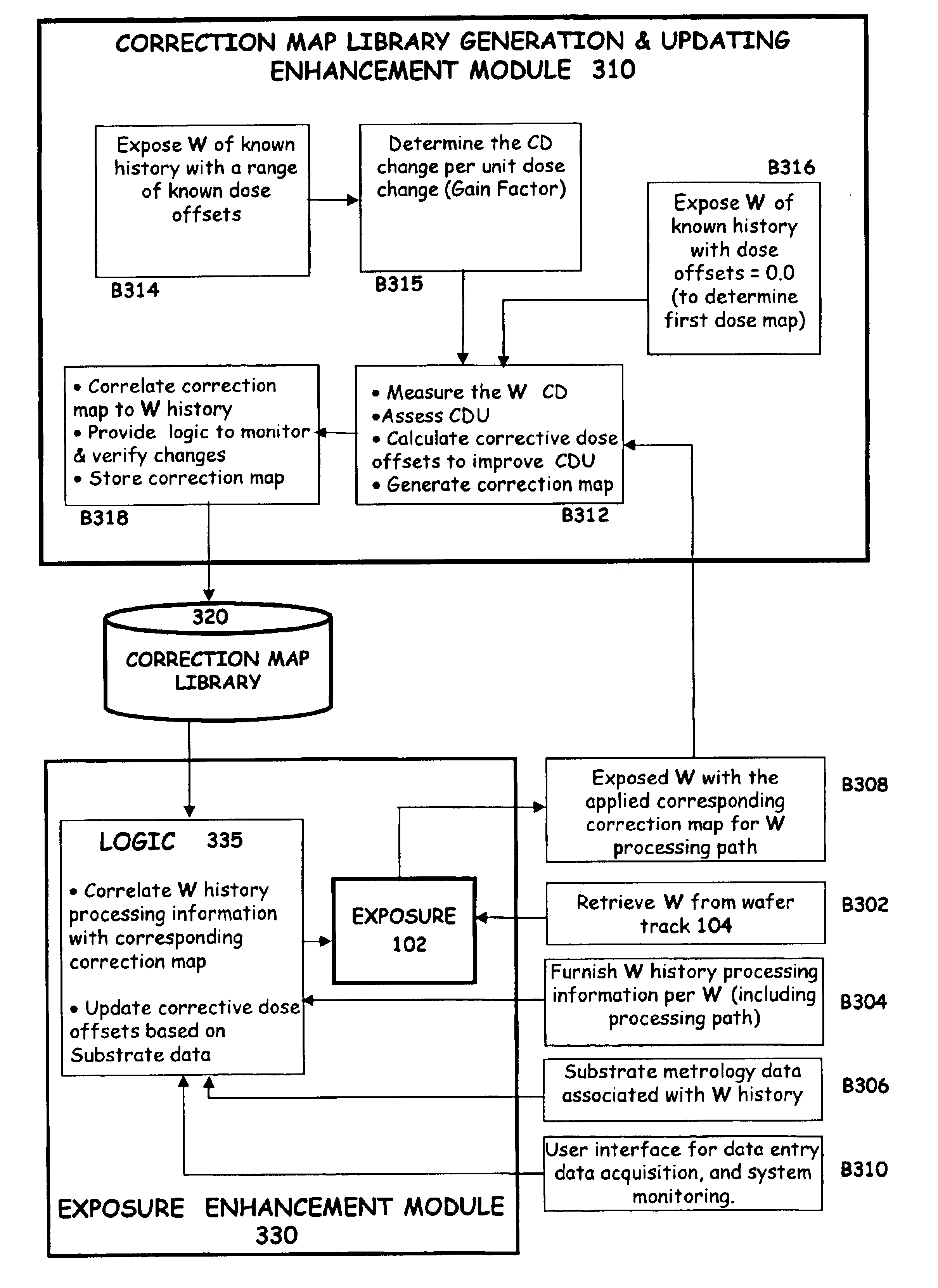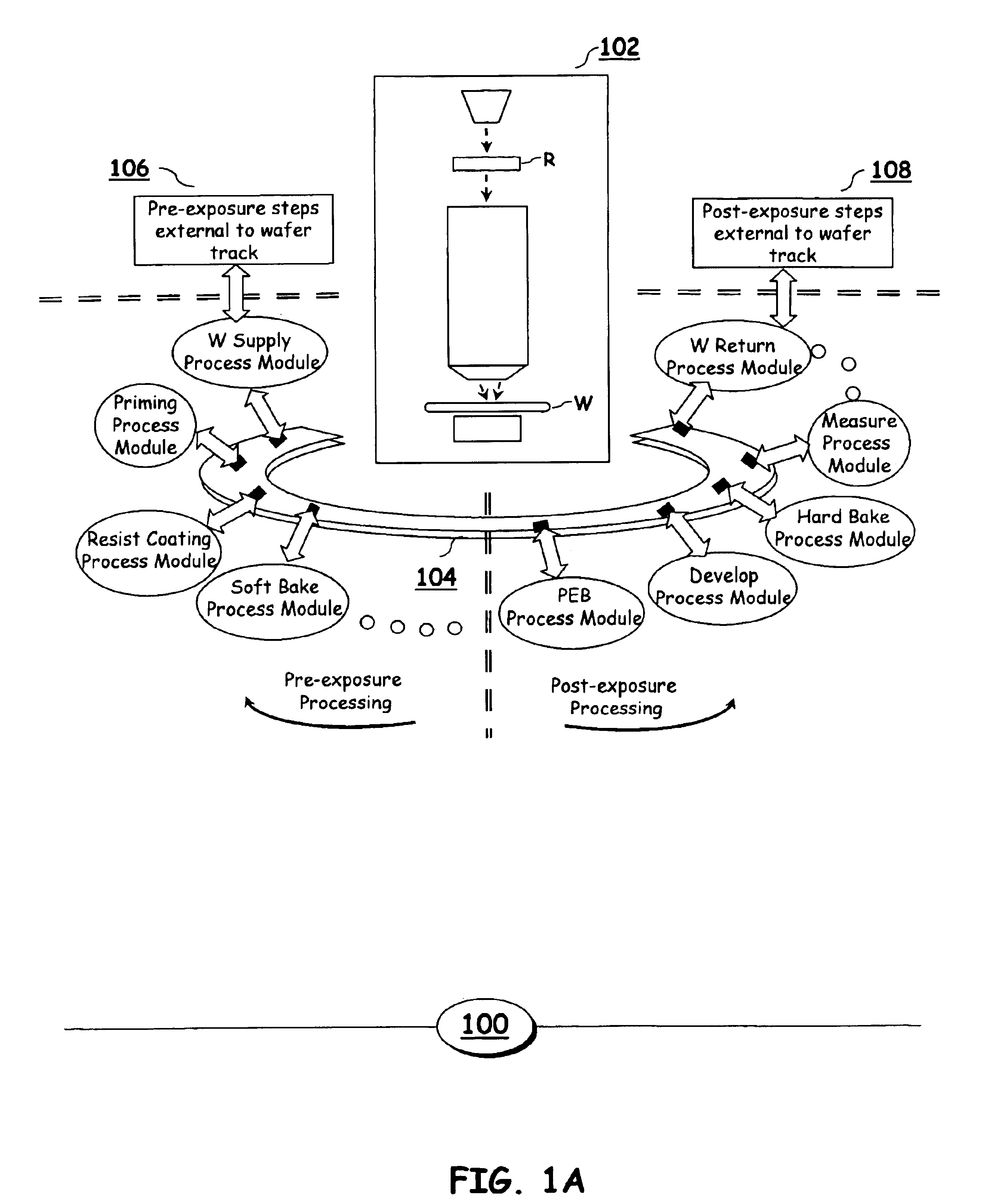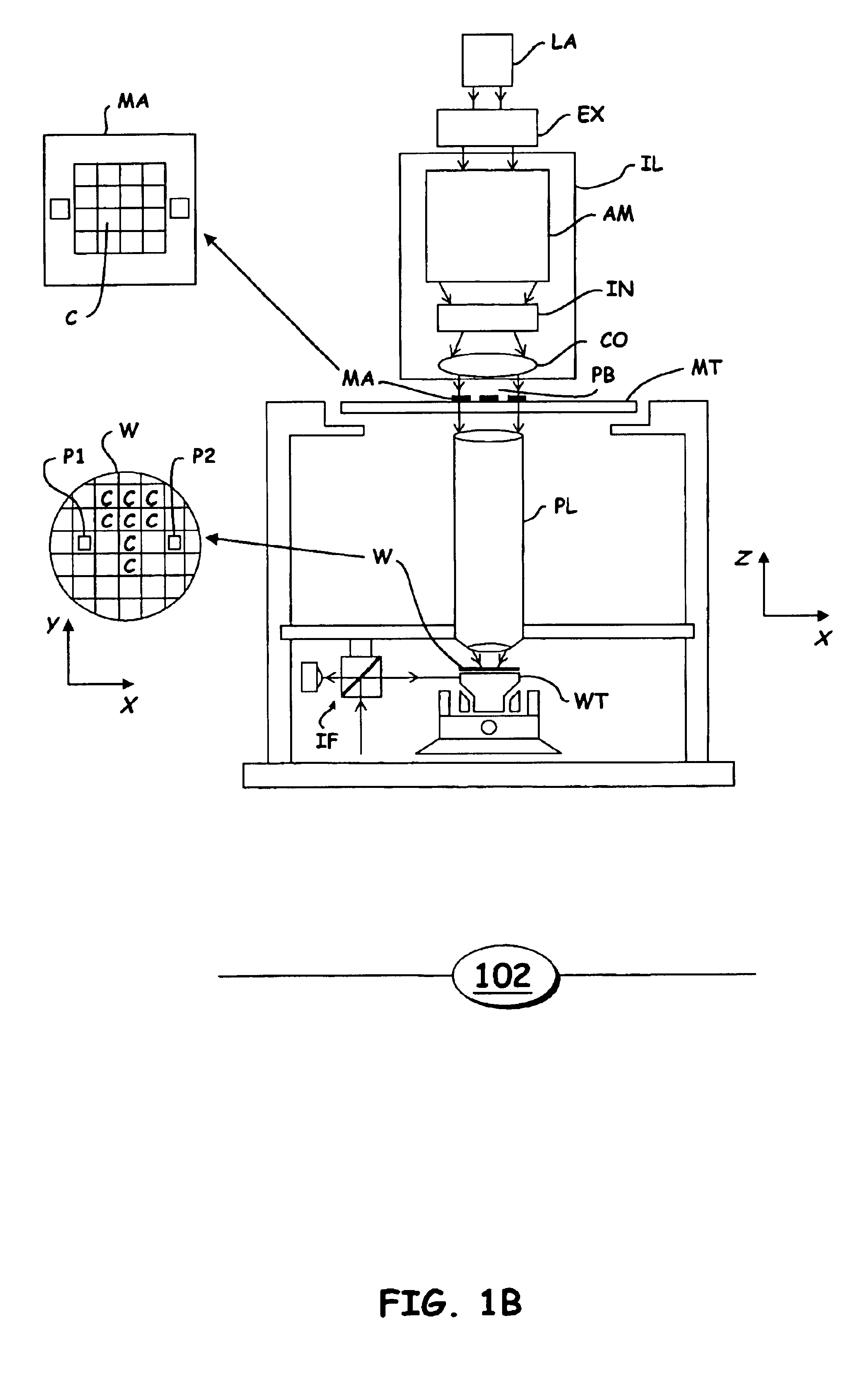Adaptive lithographic critical dimension enhancement
a critical dimension and enhancement technology, applied in the field of lithographic system and method of lithographic exposure, can solve the problems of loss of yield, cd uniformity, affecting critical dimension uniformity, etc., and achieve the effect of improving cd uniformity
- Summary
- Abstract
- Description
- Claims
- Application Information
AI Technical Summary
Benefits of technology
Problems solved by technology
Method used
Image
Examples
Embodiment Construction
gram depicting an embodiment of the present invention;
[0029]FIGS. 4A, 4B illustrate examples of pre-exposure metrology data;
[0030]FIGS. 4C, 4D illustrate a typical dose layout used to determine the gain factor for the process and the corresponding wafer CD change per unit dose, respectively;
[0031]FIGS. 4E, 4F illustrate a typical dose layout with dose offsets set to zero and the corresponding results of a wafer CD, respectively; and
[0032]FIGS. 4G, 4H illustrate a typical optimal corrected dose layout and the corresponding result of a wafer CD, respectively.
[0033]In the figures, corresponding reference symbols indicate corresponding parts.
DETAILED DESCRIPTION
[0034]As noted above, processes that treat the substrate wafers contribute to variations in CDU that negatively affect the quality and performance of the exposed patterns. Such non-uniformities may occur across a target field, across a wafer, and between wafers. Moreover, these non-uniformities can also vary depending a variety o...
PUM
 Login to View More
Login to View More Abstract
Description
Claims
Application Information
 Login to View More
Login to View More - R&D
- Intellectual Property
- Life Sciences
- Materials
- Tech Scout
- Unparalleled Data Quality
- Higher Quality Content
- 60% Fewer Hallucinations
Browse by: Latest US Patents, China's latest patents, Technical Efficacy Thesaurus, Application Domain, Technology Topic, Popular Technical Reports.
© 2025 PatSnap. All rights reserved.Legal|Privacy policy|Modern Slavery Act Transparency Statement|Sitemap|About US| Contact US: help@patsnap.com



